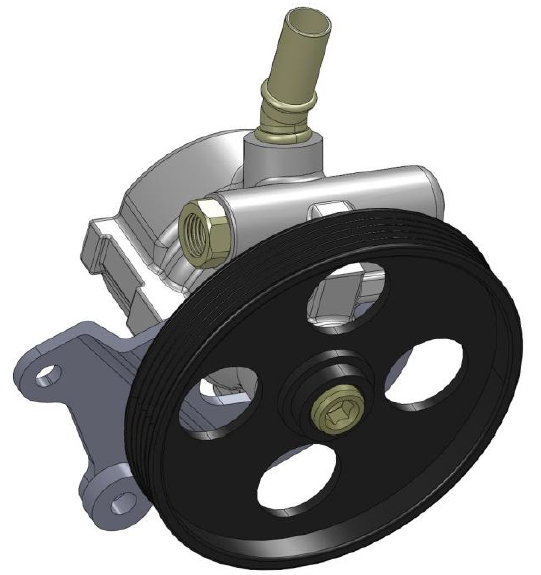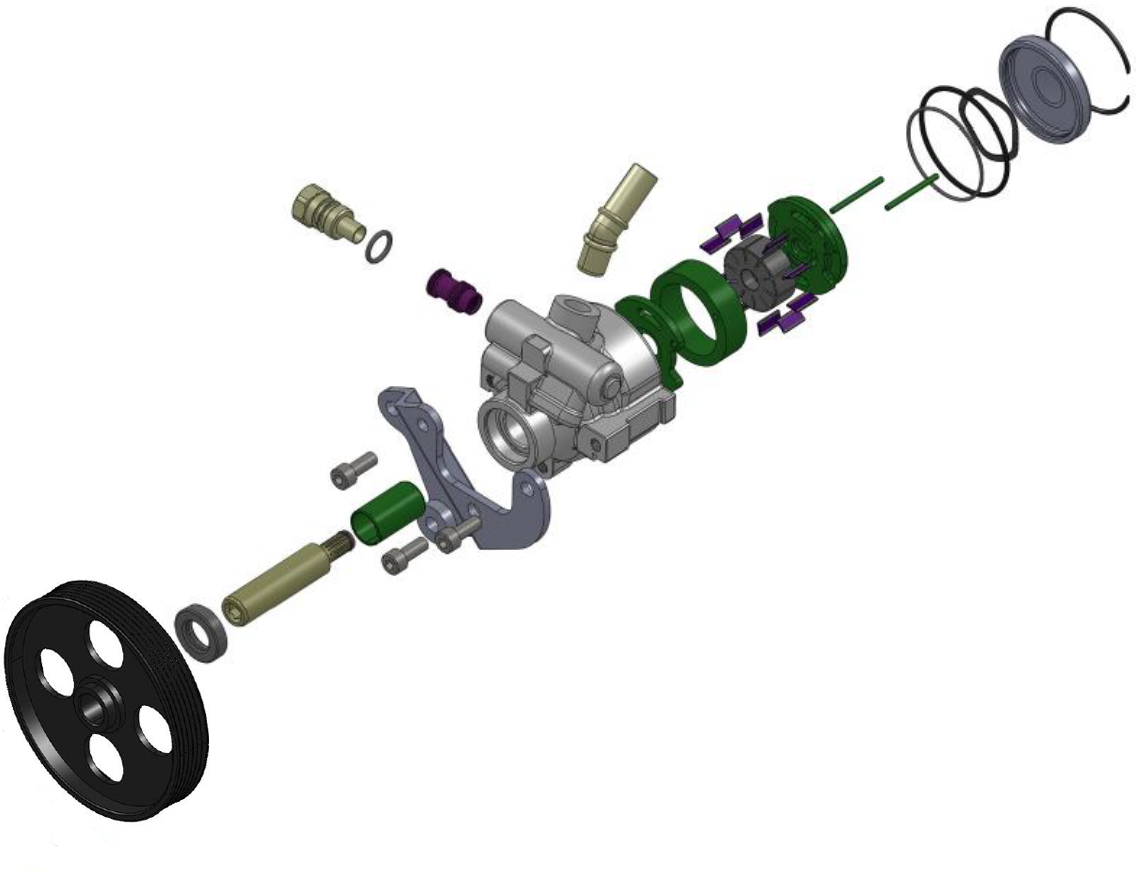
Hydraulic actuators add controlled energy to the steering mechanism, so the driver can provide less effort to turn the steered wheels when driving at typical speeds, and reduce considerably the physical effort necessary to turn the wheels when a car is stopped or moving slowly.
Power steering can also be engineered to provide some artificial feedback of forces acting on the steered wheels.
Representative power steering systems for cars augment steering effort via an actuator, a hydraulic cylinder. These systems have a direct mechanical connection between the steering wheel and the linkage that steers the wheels. This means that power-steering system failure (to augment effort) still permits the car to be steered using manual effort alone.
Hydraulic power steering systems work by using a hydraulic system to multiply force applied to the steering wheel inputs to the vehicle’s steered road wheels. The hydraulic pressure typically comes from a rotary vane pump driven by the vehicle’s engine.

